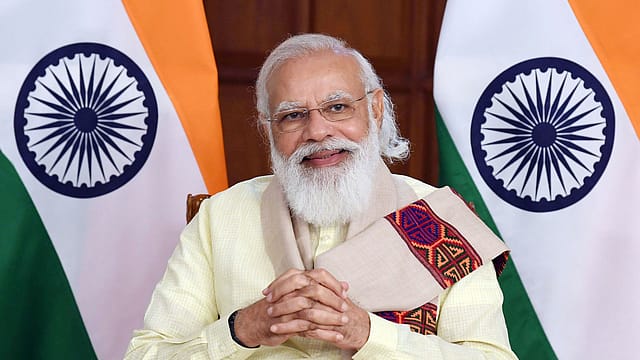What explains Modi’s high approval rating?
ADVERTISEMENT

On September 2, the approval tracker Morning Consult released results of a global survey of adults and their approval for world leaders. Indian Prime Minister Narendra Modi topped the list with an approval rating of 70 per cent, or 18 per cent higher than German Chancellor Angela Merkel, 22% more than U.S. President Joe Biden, and beating British Prime Minister Boris Johnson by 29 percentage points.
India has had a severe second wave of Covid-19 and bounced back clocking vaccinations at a rate of 10 million a day for several days in August 2021, a month where the country vaccinated more people than the G7 countries combined.
But this is not the only reason for Modi’s continued popularity in the middle of his second successive term in office. To understand this better consider something called the ‘prosperity index’.
The prosperity index has been developed by The Institute of Global Prosperity at University College London (UCL). It surveyed a range of respondents to understand how they – instead of politicians and business leaders—viewed prosperity.
What emerged from this study is not always—in fact, is rarely—at the forefront of conversations on economic growth. Those debates are led by an enumeration mostly of construction statistics—a physical building frenzy which is supposed to trickle down many jobs and bring prosperity. To some, it does. To others, it does not.
December 2025
The annual Fortune 500 India list, the definitive compendium of corporate performance, is out. This year, the cumulative revenue of the Fortune 500 India companies has breached $2 trillion for the first time. Plus, find out which are the Best B-schools in India.
In our severely polluted, ailing, unequal world, a focus on physical construction alone is not enough to provide a sense of well-being. In the UCL study, respondents spoke about key criteria for well-being, including an affordable home, good (and cheap public transport), cheap digital/internet services, among other things. Things that make life easier on a day-to-day basis.
Now connect this idea with the direction public policy has taken in India. Rapid spread of digital infrastructure has made direct benefit transfer the preferred mode of transfer of government benefits. Since inception in 2013, this method has been used to transfer 8.22 lakh crore rupees (₹8.22 trillion) delivering the funds of across 450 government schemes to beneficiaries directly in their bank accounts, plugging leakages. This scheme alone has touched 900 million people and sent out 60% of government welfare in a country which was once so rampant with graft that only 15% of every rupee spent reached the end user.
A state scheme, Pradhan Mantri Awas Yojana (Urban) Mission, aimed at providing homes for the urban poor has built five million homes for the poor, and work on another nearly nine million has started. It has completed the task of connecting every village in the country to the electricity grid.
Another ministry, Jal Shakti, aims to provide a ‘functional household tap connection’ or tapped water to every household in the country. Around 16% of Indian households had such a connection in August 2019—and more than 42% have it today.
The insight that India needs to get many basic things right is neither novel, nor unique. But solving this problem at scale has been an issue since independence in 1947. One public policy response has been to, instead, go for top-end targets—build engineering colleges that today supply some of the best brains all the way from Silicon Valley to ‘TechHalli’ (a new name that is recently being bandied about for Bengaluru, the tech capital of the country), if you cannot provide clean toilets.
Which, by the way, is another thing India has built at scale since 2014 when Modi came to power – more than 100 million toilets to end open defecation. For the first time, recently, the Indian Railways—one of the biggest railway networks in the world - announced that it was introducing mass roll-out of bio-toilets to end excreta landing up on tracks, only to be cleaned by manual scavengers, often people belonging to the lowest caste in the traditional, and discriminatory, hierarchical system. Bio-toilets would end not only the hygiene problem but also the discrimination and ostracism issue.
As far as data is concerned, at $0.09/GB, India has the cheapest data in the world whose consumption has gone up by nearly 1,300% in the last five years. Competition in the telecommunications sector has brought out such consumer-friendly prices—now a government scheme is hiring marketeers to explain the benefits of broadband to the remotest parts of the country even as it seeks to connect every village (more than 660,000 at last count) with high-speed Internet.
This is not to say that India is not building big infra—it is, with a promise to spend 100 trillion rupees in new infrastructure including grand highways.
But to understand what is going on in India one must study the impact of the touch-feel aspects of Modi’s economics, the construction of what would be called ‘human infrastructure’, which is based on immediate, on-ground feedback of what would make daily lives of the underprivileged better.
In a country as vast and as diverse, and complex as India, sometimes things do not work out exactly as planned but a spate of plans such as the ones outlined above has triggered a feeling in many that at least there is intention.
This feeling translates into popularity data.
